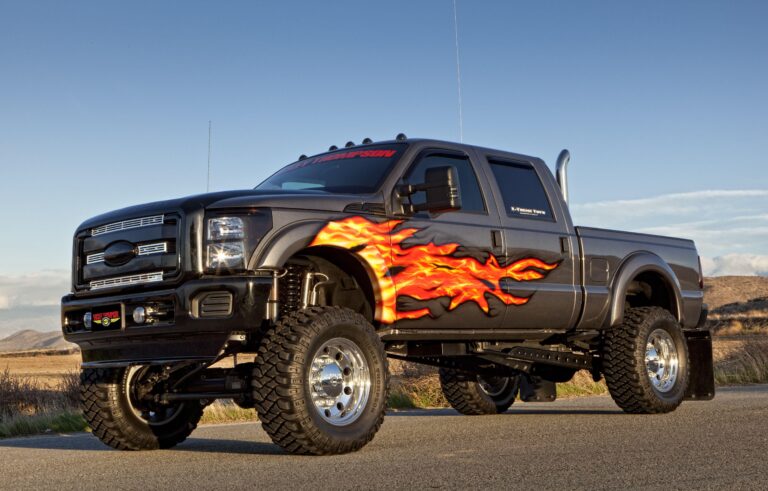How Much Height In The Bed Of A Silverado 1500 With A Cap On It: A Comprehensive Guide
How Much Height In The Bed Of A Silverado 1500 With A Cap On It: A Comprehensive Guide cars.truckstrend.com
For anyone considering a truck cap for their Chevrolet Silverado 1500, one of the most critical and often overlooked specifications is the internal usable height within the truck bed once the cap is installed. This measurement dictates what you can haul, whether you can comfortably sleep or sit inside, and even if your truck will still fit into your garage. Understanding "how much height in the bed of a Silverado 1500 with a cap on it" isn’t just a technical detail; it’s a fundamental aspect of the cap’s utility and your overall satisfaction.
This comprehensive guide will delve into the various factors influencing this vital dimension, provide practical calculations, explore different cap types, and offer actionable insights to help you make an informed decision. Whether you’re a weekend adventurer, a tradesperson, or simply looking to expand your truck’s enclosed storage, optimizing the internal bed height is paramount.
How Much Height In The Bed Of A Silverado 1500 With A Cap On It: A Comprehensive Guide
Understanding the Baseline: Silverado 1500 Bed Dimensions (Without a Cap)
Before we can discuss the added height from a cap, it’s essential to establish the inherent dimensions of the Silverado 1500’s truck bed. While slight variations can occur between model years and trim levels, the bed depth (from the floor of the bed to the top edge of the bed rails) of a modern Chevrolet Silverado 1500 typically falls in a consistent range.
On average, the bed depth of a Silverado 1500 is approximately 22 to 23 inches. This measurement serves as your fundamental baseline. Any item you place in the bed without a cap must fit within this vertical space. When a cap is added, this internal height is extended, but how much it extends depends entirely on the type and design of the cap. It’s also crucial to remember that the wheel wells will intrude into this space, significantly reducing the usable width and slightly impacting the perceived height over those areas.
Types of Truck Caps and Their Impact on Internal Height
Truck caps, also known as camper shells or truck toppers, come in various designs, each offering a different compromise between aesthetics, aerodynamics, and crucially, internal volume and height. The choice of cap type is the primary determinant of the usable height in your Silverado’s bed.
-
Cab-High Caps (Flush Mount):

- Description: These caps are designed to be flush with the roofline of your Silverado 1500’s cab. They are the most common type, offering a sleek, integrated look that minimally impacts aerodynamics.
- Impact on Height: Cab-high caps typically add very little, if any, additional height above the top of the bed rails. Their internal roof is usually just a few inches above the bed rail, providing an internal usable height that is roughly equivalent to the bed depth itself, plus the thickness of the cap’s roof (around 1-2 inches).
- Usable Internal Height (from bed floor): Approximately 22 to 24 inches.
- Ideal for: General cargo protection, light hauling, maintaining vehicle aesthetics, minimizing overall vehicle height for garage clearance.
-
Mid-Rise Caps:
- Description: Mid-rise caps offer a noticeable increase in internal volume compared to cab-high models. They typically rise 3 to 6 inches above the cab’s roofline, often with a subtle, aerodynamic slope.
- Impact on Height: These caps significantly enhance the usable vertical space. The additional height above the cab translates directly into more internal headroom within the bed.
- Usable Internal Height (from bed floor): Approximately 25 to 28 inches.
- Ideal for: Hauling slightly taller items, providing more comfortable sitting room for camping, increased cargo capacity without going "over the top."
-
High-Rise Caps (Commercial/Max Height):
- Description: As the name suggests, high-rise caps provide the maximum possible internal height. They can extend anywhere from 8 to 14 or more inches above the Silverado’s cab roof. These are often seen on commercial vehicles or dedicated overlanding rigs.
- Impact on Height: High-rise caps are designed for maximum cargo volume and offer the most generous internal height. Some designs can even allow for a person to crouch or nearly stand upright (depending on the person’s height and any raised floor platforms).
- Usable Internal Height (from bed floor): Approximately 30 to 36+ inches.
- Ideal for: Transporting very tall items (e.g., ATVs, tall furniture, large equipment), creating a more spacious and comfortable camping or living area, commercial applications requiring maximum volume.
-
Wedge/Aerodynamic Caps:
- Description: These caps typically slope upwards from the cab towards the tailgate, offering a blend of aerodynamics at the front and increased height at the rear.
- Impact on Height: The height will vary across the length of the bed. The front might be cab-high or slightly above, while the rear can offer mid-rise or even high-rise dimensions.
- Usable Internal Height (from bed floor): Varies, but often ranges from 24 inches at the front to 30 inches or more at the rear.
- Ideal for: Those seeking a balance between fuel efficiency and the ability to carry taller items, particularly those that can be loaded from the rear.
Calculating the Usable Internal Height
To get a precise measurement for your specific setup, you’ll need to combine the Silverado’s bed depth with the cap’s design.
General Formula:
Usable Internal Height = (Silverado 1500 Bed Depth) + (Additional Height Provided by Cap Above Bed Rails) – (Thickness of Bed Liner/Mat) – (Any Internal Obstructions like Lights/Fans)
Example Calculation (Mid-Rise Cap):
- Silverado 1500 Bed Depth: ~22.5 inches
- Mid-Rise Cap (adds approx. 4 inches above bed rails): +4 inches
- Spray-in Bedliner (negligible reduction) or Drop-in Bedliner (-0.5 inches): -0.5 inches
- Internal Lights/Fan: -0.5 inches (if they protrude significantly)
- Estimated Usable Internal Height: 22.5 + 4 – 0.5 – 0.5 = 25.5 inches
Crucial Tip: Always measure from the lowest point on your bed floor (accounting for any bed liners) to the highest unobstructed point on the inside of the cap’s ceiling. Remember to consider the wheel wells, as they will significantly limit the usable width at that height.
Factors Affecting Usable Height (Beyond Cap Type)
While the cap’s design is paramount, other elements can subtly, yet significantly, impact your actual usable height:
- Bed Liners and Mats: A drop-in bed liner or a thick rubber mat can reduce your effective bed depth by anywhere from 0.5 to 1.5 inches. A spray-in liner has a negligible effect on height.
- Cargo Management Systems: If you install a drawer system, sliding tray, or raised sleeping platform, these will drastically reduce your vertical cargo space. A sleeping platform typically raises the floor by 10-15 inches, consuming a significant portion of your available height.
- Internal Cap Accessories: Roof-mounted lights, interior fans, insulation, or custom shelving/racks can intrude into the usable space.
- Aftermarket Suspension/Lift Kits: While these affect the overall vehicle height and ground clearance, they do not change the internal usable height within the truck bed. However, they are important to consider for overall vehicle clearance.
Practical Implications and Considerations
The chosen internal height has several real-world consequences:
- Cargo Fitment: Can you stand up a bicycle without removing the front wheel? Will a mini-fridge fit? Can you load a stack of plywood flat on the floor and still close the tailgate?
- Camping/Living Space: For overlanders or campers, every inch matters. Can you sit up comfortably without hitting your head? Can you change clothes? A few extra inches can transform a cramped space into a functional one.
- Aerodynamics & Fuel Economy: Taller caps present a larger frontal area, increasing aerodynamic drag. This can lead to a noticeable decrease in fuel efficiency, especially at highway speeds.
- Overall Vehicle Height: This is critical! Always measure your total vehicle height (Silverado + Cap) if you have a garage, carport, or frequently encounter low clearances (drive-thrus, parking garages, low bridges). A high-rise cap can easily push your Silverado’s overall height past 7 feet.
- Accessibility: Taller caps mean reaching items at the front of the bed can be more challenging. Consider adding side access windows or a bed slide.
Tips for Maximizing and Utilizing Bed Height
- Measure Everything: Before purchasing a cap, and before loading cargo, measure. Measure the cap’s internal height, measure your garage door opening, and measure your tallest items.
- Vertical Organization: Use vertical cargo nets, shelving, or custom racks to make the most of your vertical space.
- Foldable/Collapsible Items: Opt for gear that can be folded or collapsed to save space when not in use.
- Consider a Bed Slide/Drawer System: While these reduce height, they significantly improve accessibility, allowing you to load and unload items without crawling into the bed.
- Strategic Loading: Place taller items towards the rear or where the cap offers the most height.
Potential Challenges and Solutions
- Challenge: My Silverado with a high-rise cap won’t fit in my garage.
- Solution: Measure before buying! If it’s too late, you’ll need to park outside or consider a different cap type. Some garages can have their door tracks adjusted slightly for a few extra inches.
- Challenge: Not enough headroom for comfortable camping.
- Solution: Opt for a high-rise cap. If you already have a mid-rise, consider a smaller sleeping platform or a lower-profile mattress. Some caps offer pop-up sections for additional temporary height.
- Challenge: Taller items don’t fit even with a cap.
- Solution: Re-evaluate your cap choice. If it’s an occasional need, consider renting a trailer or removing the cap for specific hauls. For frequent needs, a high-rise cap or alternative transport might be necessary.
Price Table: Truck Cap Types and Their Height/Cost Implications
This table outlines the typical characteristics of different truck cap types for a Silverado 1500, focusing on their impact on internal bed height and approximate cost.
| Cap Type | Approx. Added Height (above bed rails) | Est. Internal Usable Height (from bed floor)* | Price Range (USD)** | Key Benefit (Height) | Primary Use Case | Considerations |
|---|---|---|---|---|---|---|
| Cab-High (Flush) | 0 – 2 inches | ~22 – 24 inches | $1,500 – $3,000 | Matches cab, least aerodynamic impact. | General cargo, aesthetics | Limited vertical space, good garage clearance. |
| Mid-Rise | 3 – 6 inches | ~25 – 28 inches | $2,000 – $3,500 | Good balance of height and aesthetics. | More versatile cargo, comfortable sitting | Moderate impact on overall vehicle height. |
| High-Rise (Max Ht.) | 8 – 14+ inches | ~30 – 36+ inches | $2,500 – $4,500+ | Maximum cargo volume, near stand-up room. | Commercial, serious camping/overlanding | Increased drag, significant garage/clearance issues. |
| Wedge/Aerodynamic | Varies (e.g., 2" front, 8" rear) | ~24 – 30 inches (at tallest point) | $2,000 – $4,000 | Aerodynamic front, good rear height. | Balanced use, specific cargo needs | Variable internal height, can be less aesthetically pleasing. |
*Note: Assumes Silverado 1500 bed depth of ~22.5 inches and accounts for minor internal cap thickness/obstructions. Actual usable height may vary slightly based on specific cap model and any bed liners/mats installed.
**Price ranges are estimates for new, painted fiberglass caps from major manufacturers (e.g., ARE, Leer, Snugtop) and can vary based on features, finish, and installation costs.
Frequently Asked Questions (FAQ)
Q1: Will a truck cap make my Silverado 1500 too tall for my garage?
A1: Potentially, yes. A standard Silverado 1500 is typically around 6.2 to 6.5 feet tall. A cab-high cap usually keeps you under 7 feet. However, a mid-rise or especially a high-rise cap can easily push your total vehicle height to 7 feet or more, which might exceed standard garage door clearances (often 7 feet or 8 feet). Always measure your garage opening and the total height of your truck with the cap installed.
Q2: Can I stand up inside the bed of a Silverado 1500 with a cap?
A2: Generally, no, not fully upright unless you are very short or have a custom, extremely high-rise commercial cap. Even with the tallest high-rise caps, you’ll likely be able to crouch or sit up very comfortably, but full standing room is rare for most adults.
Q3: Does the bed height vary significantly between Silverado 1500 model years?
A3: While minor changes can occur, the bed depth (floor to rail) of the Silverado 1500 has remained relatively consistent for modern generations, typically around 22-23 inches. Any significant differences would usually be highlighted by manufacturers.
Q4: How do I accurately measure the usable height inside my truck bed with a cap?
A4: Use a tape measure. Measure from the lowest point on your truck bed floor (accounting for any bed liners or mats) straight up to the lowest point of the cap’s interior ceiling. Be sure to check multiple spots, especially near internal features like lights or vents.
Q5: Do bed liners affect the internal height?
A5: Yes, a drop-in plastic bed liner or a thick rubber mat can reduce your usable internal height by 0.5 to 1.5 inches. A spray-in bedliner has a negligible effect on height.
Q6: What if I need more height for occasional large items but don’t want a permanent high-rise cap?
A6: For occasional tall items, consider using a utility trailer or renting a larger vehicle. Some cap manufacturers offer "pop-up" style caps or tents that can be temporarily extended for increased headroom when camping, but they are not designed for driving with the pop-up extended.
Conclusion
The usable height in the bed of a Silverado 1500 with a cap is a critical dimension that profoundly impacts the functionality and versatility of your truck. From the baseline depth of the Silverado’s bed to the varying designs of truck caps – be it cab-high, mid-rise, or high-rise – every choice contributes to the final usable vertical space.
By understanding the approximate measurements, considering factors like bed liners and internal accessories, and carefully evaluating your specific needs for cargo, camping, or commercial use, you can select the perfect cap. Remember to always measure your vehicle’s total height for garage clearance and prioritize the features that align with your lifestyle. A well-chosen cap transforms your Silverado into an even more capable and tailored vehicle, maximizing its potential for all your adventures and tasks.





